



Smoggy skies in Delhi have once again put the spotlight on Punjab’s annual ritual of paddy residue burning. The problem is not new and neither are its solutions. But what has changed since the past year, when post-Kharif farm fires were at a five-year high? In our two-part blog series, we examine the situation on the ground in Amritsar and Tarn Taran.
Farm fires in the state start in the north-western Majha region, comprising Amritsar, Gurdaspur, Pathankot, and Tarn Taran, and then fires move southwards to the larger Malwa region. Recognising this trend, we spoke to district-level officials from the state’s Department of Agriculture and the Krishi Vigyaan Kendra. Our interactions revealed that little has changed in the region over the last year.
Officials indicate that the crop mix in the region has remained the same. Because of rewarding prices in the free market, farmers in Amritsar have continued to use the Basmati varieties of 1121 and 1509. In contrast, farmers in Tarn Taran remain committed to non-basmati varieties including PR 121, PR 126, and PR 110 counting on assured procurement.
This contrast in seed types also reflects in the fire counts1 of the two districts. Despite having identical areas under paddy2, Tarn Taran registered 3,799 fires compared to Amritsar’s fire count of just 2,148 fires last year.
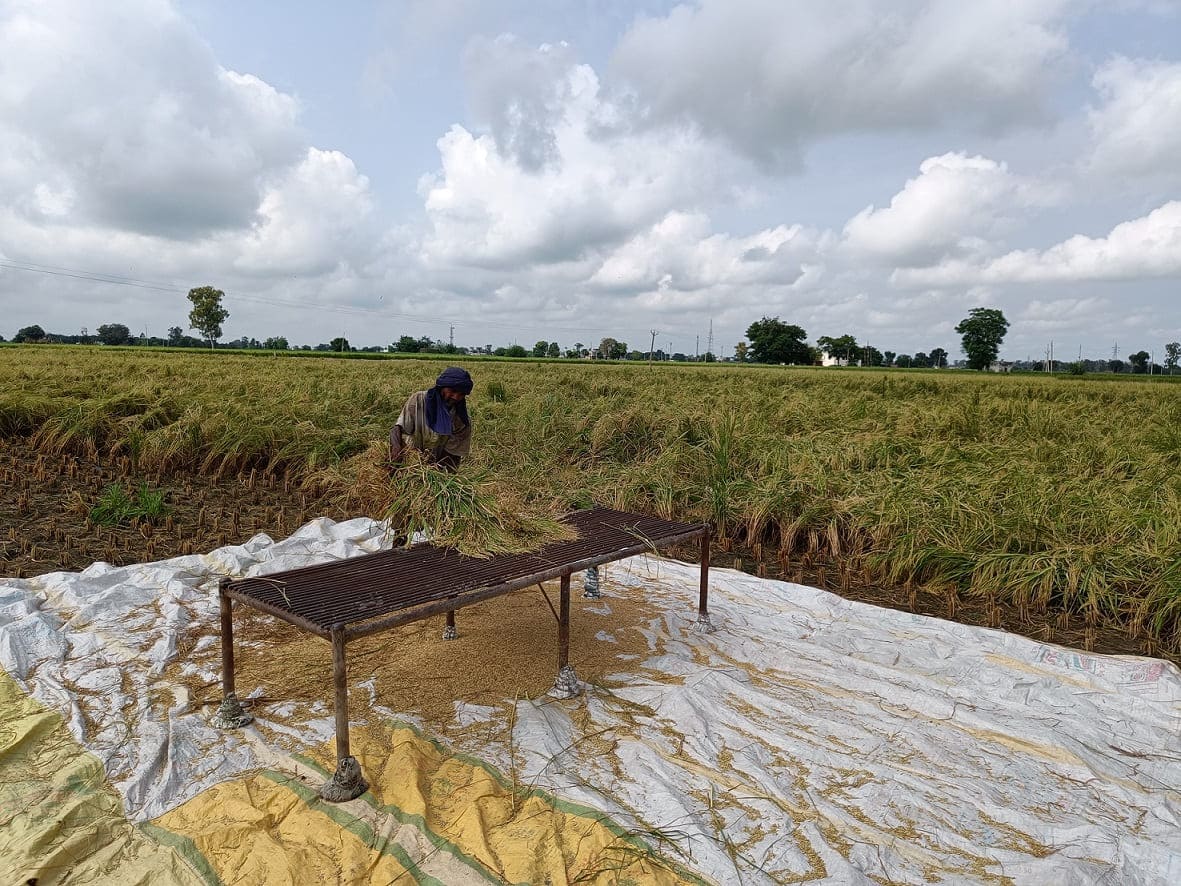
A farm labourer harvests Basmati crops manually leaving little stubble on the farmland. Source: CEEW
Our interaction with farmers in the Amritsar region revealed a major lacuna in the available technical solutions to manage residue burning. The introduction of short-duration varieties of paddy was meant to reduce water use and provide extra time for residue management. Varieties like the PR 121 and PR 126 mature in 140 and 123 days respectively. These varieties theoretically offer 3 to 6 weeks of added time for environment-friendly residue management compared to the PUSA 44 variety, which matures in about 160 days.
However, farmers use the extra time to grow vegetables like potatoes, peas, and beans. Vegetable cultivation and in-situ crop residue management (CRM) are not being used in tandem and thus farmers resort to burning the residue generated by cultivating short-duration varieties of paddy.
Moreover, in-situ CRM machines remain the focal point of public policy aimed at reducing farm fires in Punjab. As per data from 2021, Amritsar and Tarn Taran have at least 2,400 and 4,000 such machines3 respectively. However, despite 2022 being the fifth year that such machines are being distributed, farmers are yet to be acquainted with their impact.
Members of the Bhojjian Village Co-operative Society in Tarn Taran admit that burning is the most prevalent method for crop residue management. They attribute this to the problems farmers face when using in-situ machines like happy and super seeders.
A spokesperson from the society explains “The super seeder (SS) was very popular. But unfortunately, most farmers suffered due to pest infestation. In addition, no one wants to spend INR 2,500 per acre to manage residue. The upfront cost of a SS is INR 2,70,000 whereas the maximum subsidy for it is INR 1,05,000. Farmers have to take loans with interest of up to 11 per cent to buy these machines. Some of our members have been selected for subsidy but we will not claim them due to costs over and above the subsidy.”
The persistence of crop residue burning creates an impression that little has changed in the status quo. However, we did encounter effective small-scale solutions, including a paddy residue based paper mill and the local ‘Gujjar’ (herder) community.
The herder community, widely present in Amritsar, uses paddy residue for fodder. Local community members explain that a single animal from their cattle can consume paddy residue up to 0.7 acres; one herder can cover an area within 10-15 km around their settlement. However, their limited scale of operation prevents the community from having any significant impacts on residue burning.
Meanwhile, Sharma’s Paper and Board Industries uses paddy straw, sludge, and gunny (jute) bags in a ratio of 70:20:25 to produce paper and cardboard. Located in Dalam, Amritsar, the industrial unit has been operational for three decades. Each year, the unit can consume up to 1,500 metric tonnes of paddy residue.
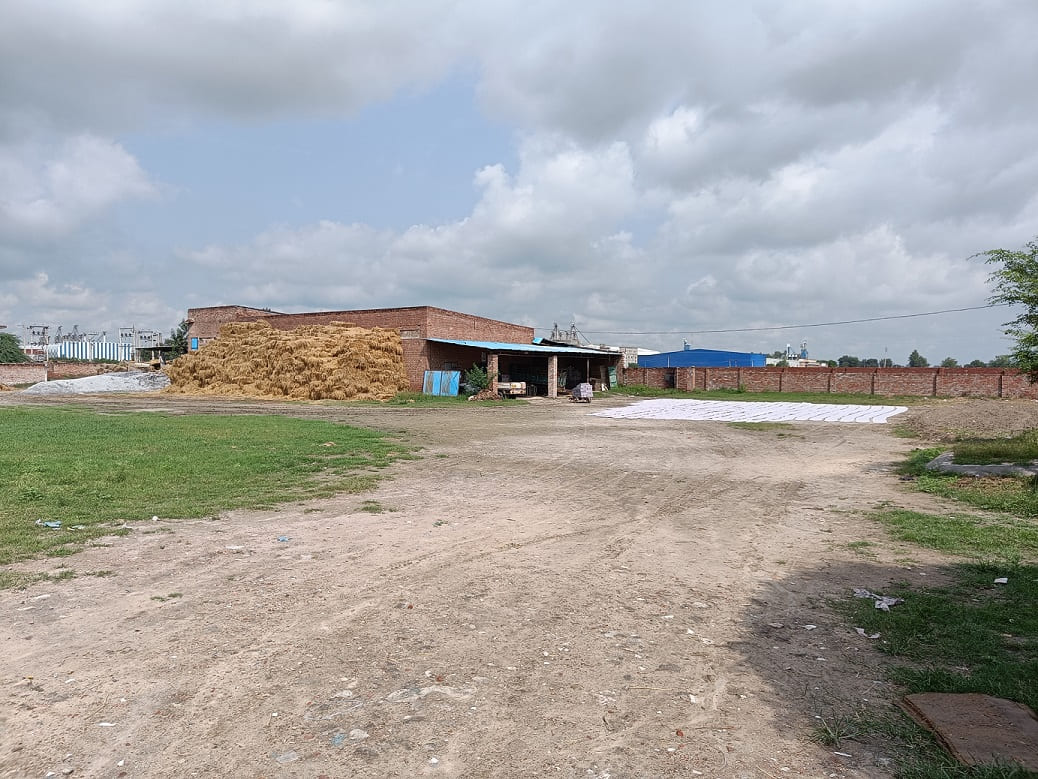
Paddy straw storage at Sharma’s Paper and Board Industries. Source: CEEW
However, the entrepreneur, Mr. Rajinder Sharma, indicates that such units face several hurdles in scaling up. These include high moisture content in paddy residue, unavailability of standard-size bales, and the lack of land required for storing and drying the paddy residue.
Irrespective of the scale of these ex-situ solutions, farmers and experts in the two districts identified ex-situ utilisation as the best method for CRM.
While in-situ and ex-situ CRM options present short and medium-term options, some farmers are cultivating alternate crops in a bid to break away from the paddy-wheat monoculture.
The Punjab government’s announcement of procuring summer moong4 presented an opportunity for farmers to get acquainted with a new crop. However, the lack of procurement appears to have created more apprehensions toward crop diversification.
Between May and October 2022, 1,638.7 metric tonnes5 of moong arrived at mandis in Amritsar. Of this, 92.12 per cent was procured by private players. During the same period, 98 per cent of the 729.3 metric tonnes of moong at mandis in Tarn Taran was procured by private players. A district-level agriculture officer sums up the moong experiment in the following words, “The new thing this year was moong. Some farmers had planted the crop with a view to diversify. But there was very little government procurement, as most farmers’ crops did not meet the stringent quality requirements for government procurement at the minimum support price. This will discourage farmers from future attempts at diversification.``
Farmers who experimented with moong are not the only ones who feel the lack of policy support. In Tarn Taran, Surinder Pal Singh Manawa, an advocate by profession, convinced his family of farmers to sow horticultural crops like pear, plum, guava, and some citrus fruits on nine acres of their land. But their experiments with horticulture have failed twice.
Adv. Manawa points to the lack of extension services6 as the reason for his crop failure. He says, “We did not have access to extension services from the government or from agricultural experts. As a result, we kept making mistakes, which led to significant losses.”
Accepting that there has been little change in the status quo is a humbling experience for all those working towards combating Punjab’s stubble burning conundrum. However, local stories of success provide both inspiration and options for the continued struggle against the problem.
Veteran farmer Gurbachan Singh of Burj Deva Singh village in Tarn Taran has led the adoption of short-duration varieties of paddy in his village. Apart from selecting environment-friendly varieties of paddy, he has also been using the Happy Seeder since 2007, long before the existence of any policy support for such machines.
Shunning the popular concerns around the Happy Seeder, Singh has stopped using fertilisers due to an improvement in soil quality. He has also persuaded 40 other farmers from his village to abandon the stubble-burning practice. Mr. Singh has emerged as a torch-bearer of improved crop residue management; the Prime Minister also recognised his efforts in his ‘Mann Ki Baat’ address in October 2018.
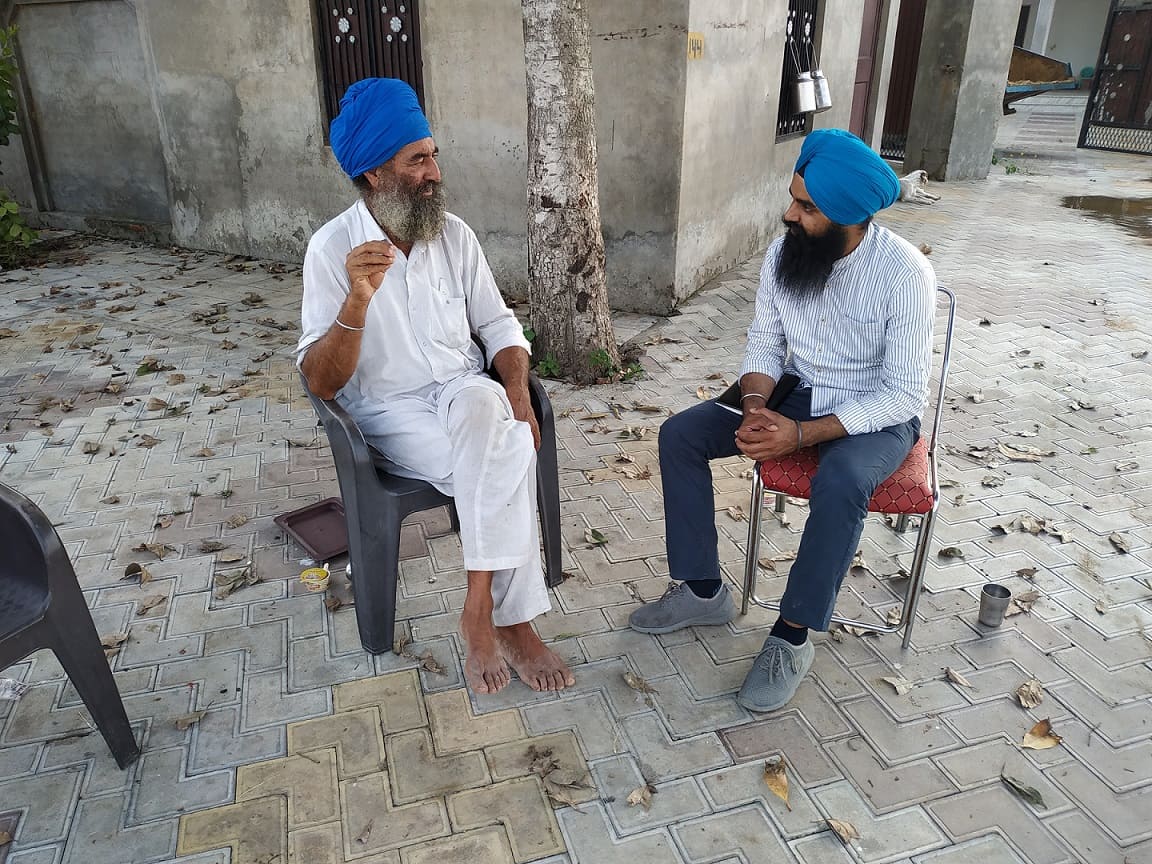
CEEW’s Ramandeep Singh interacting with Mr. Gurbachan Singh on his CRM initiatives. Source: CEEW
Our interactions with stakeholders in the Majha region revealed that existing solutions are unable to tackle the stubble-burning problem. Operational costs and the lack of scalability continue to be the most important barriers.
However, the existence of local solutions and the pioneers implementing these solutions leave us with the question: “Is it time to shift from top-down policy-making and proactively enable farmers to scale up best practices and innovations?”
Notes
1 Basmati varieties are harvested manually, which leaves little crop stubble on the field. The residues from basmati varieties are used as fodder. These factors result in lower burning of basmati residue as compared to non-basmati paddy, which is harvested mechanically.
2 MoAFW. 2021. “Cultivation of Paddy.” MINISTRY OF AGRICULTURE & FARMERS WELFARE. https://pqars.nic.in/annex/254/AU2095.pdf.
3 MoAFW. 2021. “Agriculture Mechanisation for In-Situ Management of Crop Residue.” MINISTRY OF AGRICULTURE & FARMERS WELFARE. https://pqars.nic.in/annex/254/AU1297.pdf.
4 Jagga, Raakhi. 2022. “Punjab CM Bhagwant Mann Announces MSP for Moong Dal, but with a Rider.” The Indian Express (blog). May 6, 2022.
https://indianexpress.com/article/cities/chandigarh/punjab-cm-bhagwant-mann-announces-msp-on-moong-dal-7903858/.
5 Punjab State Agricultural Marketing Board. 2022. “Daily Arrival, Today’s Purchase and Progressive Report.” October 10, 2022. https://emandikaran-pb.in/AspxPage/Open.aspx?name=15&commodityid=53.
6 Punjab State Agricultural Marketing Board. 2022. “Daily Arrival, Today’s Purchase and Progressive Report.” October 10, 2022. https://emandikaran-pb.in/AspxPage/Open.aspx?name=15
7 Extension services refer to the extension education programmes for farmers that are run by the department of agriculture and Krishi Vigyaan Kendras. These extension programmes provide technical information on cultivation practices, machinery and post-harvest management to farmers.
8 FE Online. 2018. “How Gurbachan Singh Praised by PM Modi in Mann Ki Baat Is Leading the Fight against Stubble Burning | The Financial Express.” October 28, 2018.
https://www.financialexpress.com/india-news/delhi-air-pollution-how-a-punjab-farmer-is-leading-the-fight-against-stubble-burning/1349956/
Ramandeep Singh is a Research Analyst at the Council on Energy, Environment and Water (CEEW), an independent not-for-profit policy research institution. Send your comments to [email protected]




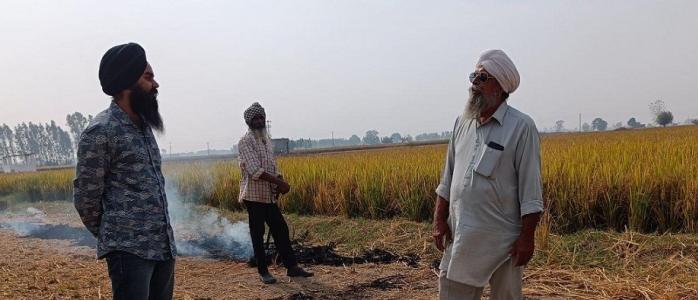
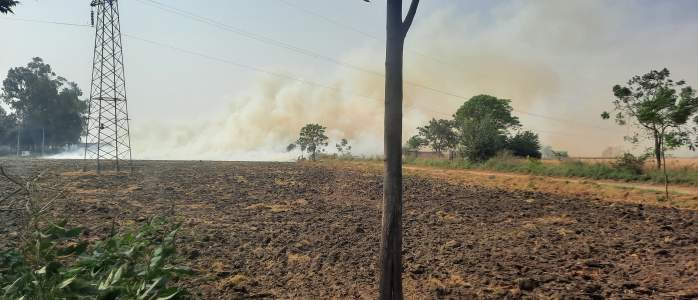
Add new comment